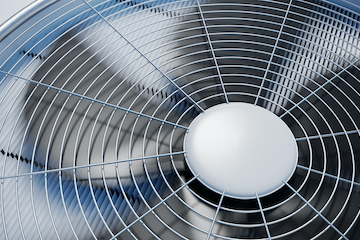

HVACs are hardly considered a rare air resource today, regardless of whether one is looking at a residential or commercial building.
In fact, the U.S. Energy Information Administration’s (EIA) 2018 Residential Energy Consumption Survey revealed that “air-conditioning equipment is used in 87% of homes in the United States.”
But that leaves one to wonder: How many of those homes have HVACs that are actually improperly sized for their property? And what effect might that have on their indoor air quality?
Well, while we might not know the exact answer to one of those questions, we can certainly help to shed light on the latter …
What Your HVAC Does For Indoor Air Quality
HVACs are not only well-suited to cooling and warming your home; they also do their fair share of work when it comes to keeping your indoor air quality optimized, as they help to filter out dust, dirt, and other debris that is otherwise best kept out of your home’s circulation.
When installed properly, HVACs provide adequate ventilation for your home, thereby keeping your air ducts cleaner and reducing the probability that you’ll battle against HVAC contaminants down the road.
Ultimately, in the words of the Berkley Lab, the routine use of HVACs (with high-efficiency filters) simply “represents a good building practice.”
What Size Means For Your Home
While the presence of an HVAC system will certainly aid your indoor air quality endeavors, merely having one is not enough — it also has to be sized correctly.
After all, when a system is either too large or too small for your home, you won’t just end up with temperature inconsistencies, but you’ll also find yourself staring down the barrel of potential mold exposure, costly energy bills, and generally degraded air quality.
In other words, purchasing an incorrectly sized HVAC system is counterintuitive to what you are trying to achieve by installing one.
But, in that case, what is a good rule of thumb when it comes to your home’s HVAC size?
“A commonly accepted old estimate is that an HVAC unit should provide one ton (12,000 Btu)
of cooling for each 400 to 500 square feet of building area,” the U.S. Department of Energy has specified. “In a very efficient house, one ton can condition 800 to 1,000 square feet.”
When An HVAC Isn’t Enough
According to the Environmental Protection Agency, “Portable air cleaners and HVAC filters can reduce indoor air pollution; however, they cannot remove all pollutants from the air.”
As previously stated, HVAC’s help with your indoor air quality, but they cannot be your sole resource for keeping your home’s air circulation optimal, particularly if you’ve already identified such issues as mold and mildew or begun to experience physical symptoms that pertain to your upper respiratory system.
Thus, when your HVAC just isn’t enough (even when properly sized), it’s time to call in the professionals: Luce Air Quality!
Luce Air Quality is a licensed team of your local indoor environmental experts, and we’re ready to provide you with solutions you can trust. Simply contact us today by calling (904) 803-1014 or email info@luceairquality.com to schedule your free inspection!


